Influence of Different Modifiers on Bonding Strength and Rheological Performance of Bitumen Emulsion
Abstract
:1. Introduction
2. Materials and Methods
2.1. Materials
2.2. Preparation of Modified Bitumen Emulsion
2.3. Bonding Strength Testing
2.4. Dynamic Shear Rheological Test
3. Results and Discussion
3.1. Bonding Strength Test Results
3.2. Dynamic Shear Rheological Analysis
3.3. Relation between Bonding Strength and Rheological Properties
4. Conclusions
Author Contributions
Funding
Acknowledgments
Conflicts of Interest
References
- Querol, N.; Barreneche, C.; Cabeza, L.F. Asphalt emulsion formulation: State of the art of formulation, properties and results of HIPR emulsions. Constr. Build. Mater. 2019, 212, 19–26. [Google Scholar] [CrossRef]
- Xiao, F.; Yao, S.; Wang, J.; Li, X.; Amirkhanian, S. A literature review on cold recycling technology of asphalt pavement. Constr. Build. Mater. 2018, 180, 579–604. [Google Scholar] [CrossRef]
- Zhu, C.; Zhang, H.; Huang, L.; Wei, C. Long-term performance and microstructure of asphalt emulsion cold recycled mixture with different gradations. J. Clean. Prod. 2019, 215, 944–951. [Google Scholar] [CrossRef]
- Zhu, C.; Zhang, H.; Guo, H.; Wu, C.; Wei, C. Effect of gradations on the final and long-term performance of asphalt emulsion cold recycled mixture. J. Clean. Prod. 2019, 217, 95–104. [Google Scholar] [CrossRef]
- Lin, J.; Huo, L.; Xu, F.; Xiao, Y.; Hong, J. Development of microstructure and early-stage strength for 100% cold recycled asphalt mixture treated with emulsion and cement. Constr. Build. Mater. 2018, 189, 924–933. [Google Scholar] [CrossRef]
- López, C.; González, A.; Thenoux, G.; Sandoval, G.; Marcobal, J. Stabilized emulsions to produce warm asphalt mixtures with reclaimed asphalt pavements. J. Clean. Prod. 2019, 209, 1461–1472. [Google Scholar] [CrossRef]
- Hou, S.; Chen, C.; Zhang, J.; Shen, H.; Gu, F. Thermal and mechanical evaluations of asphalt emulsions and mixtures for microsurfacing. Constr. Build. Mater. 2018, 191, 1221–1229. [Google Scholar] [CrossRef]
- Ayar, P. Effects of additives on the mechanical performance in recycled mixtures with bitumen emulsion: An overview. Constr. Build. Mater. 2018, 178, 551–561. [Google Scholar] [CrossRef]
- Yan, J.; Leng, Z.; Li, F.; Zhu, H.; Bao, S. Early-age strength and long-term performance of asphalt emulsion cold recycled mixes with various cement contents. Constr. Build. Mater. 2017, 137, 153–159. [Google Scholar] [CrossRef]
- Niazi, Y.; Jalili, M. Effect of Portland cement and lime additives on properties of cold in-place recycled mixtures with asphalt emulsion. Constr. Build. Mater. 2009, 23, 1338–1343. [Google Scholar] [CrossRef]
- Jiang, J.; Ni, F.; Zheng, J.; Han, Y.; Zhao, X. Improving the high-temperature performance of cold recycled mixtures by polymer-modified asphalt emulsion. Int. J. Pavement. Eng. 2018, 1–8. [Google Scholar] [CrossRef]
- Babagoli, R.; Ameli, A.; Shahriari, H. Laboratory evaluation of rutting performance of cold recycling asphalt mixtures containing SBS modified asphalt emulsion. Pet. Sci. Technol. 2016, 34, 309–313. [Google Scholar] [CrossRef]
- Abd El-Rahman, A.M.M.; El-Shafie, M.; Abo-Shanab, Z.L.; El-Kholy, S.A. Modifying asphalt emulsion with different types of polymers for surface treatment applications. Pet. Sci. Technol. 2017, 35, 1473–1480. [Google Scholar] [CrossRef]
- Zhang, Q.; Xu, Y.; Wen, Z. Influence of water-borne epoxy resin content on performance of waterborne epoxy resin compound SBR modified emulsified asphalt for tack coat. Constr. Build. Mater. 2017, 153, 774–782. [Google Scholar] [CrossRef]
- Hu, C.; Zhao, J.; Leng, Z.; Partl, M.N.; Li, R. Laboratory evaluation of waterborne epoxy bitumen emulsion for pavement preventative maintenance application. Constr. Build. Mater. 2019, 197, 220–227. [Google Scholar] [CrossRef]
- Ji, J.; Liu, L.; Suo, Z.; Xu, Y.; Yang, S.; Xu, S. Performances of micro-surfacing with waterborne epoxy resin modified emulsified asphalt. J. Chang’an Univ. (Nat. Sci. Ed.) 2017, 37, 8. (In Chinese) [Google Scholar]
- Ji, J.; Liu, L.; Suo, Z.; Yang, S.; Xu, Y.; Xu, S. Evaluation on Performances of Modified Emulsified Mixture With Waterborne Epoxy Resin. J. BeiJing Univ. Technol. 2018, 44, 9. (In Chinese) [Google Scholar]
- Yang, Y.S.; Fan, W.Y.; Wang, Z.; Zhang, Q.Q.; Nan, G.Z. Effect of Nano SiO2 on the Performance of Asphalt Emulsion and its Residue. Adv. Mater. Res. 2011, 413, 331–335. [Google Scholar] [CrossRef]
- Chen, X.L.; Liu, S. Preparation and properties of emulsion asphalt modified by nano-silica SBR composite. China Rubber Ind. 2007, 6, 4. (In Chinese) [Google Scholar]
- Sheng, X.; Wang, M.; Xu, T.; Chen, J. Preparation, properties and modification mechanism of polyurethane modified emulsified asphalt. Constr. Build. Mater. 2018, 189, 375–383. [Google Scholar] [CrossRef]
- Yu, R.; Zhu, X.; Zhou, X.; Kou, Y.; Zhang, M.; Fang, C. Rheological properties and storage stability of asphalt modified with nanoscale polyurethane emulsion. Pet. Sci. Technol. 2017, 36, 85–90. [Google Scholar] [CrossRef]
- Carrera, V.; Cuadri, A.A.; García-Morales, M.; Partal, P. The development of polyurethane modified bitumen emulsions for cold mix applications. Mater. Struct. 2014, 48, 3407–3414. [Google Scholar] [CrossRef] [Green Version]
- JTG F40-2017Technical Specification for Construction of Highway Asphalt Pavements; People’s Republic of China Ministry of Transport: Beijing, China, 2017.
- Park, Y.J.; Joo, H.S.; Kim, H.J.; Lee, Y.K. Adhesion and rheological properties of EVA-based hot-melt adhesives. Int. J. Adhesion. Adhesives. 2006, 26, 571–576. [Google Scholar] [CrossRef]
- Lindner, A.; Lestriez, B.; Mariot, S.; Creton, C.; Meavis, T.; Lühmann, B.; Brummer, R. Adhesive and rheological properties of lightly crosslinked model acrylic networks. J. Adhesion. 2006, 82, 267–310. [Google Scholar] [CrossRef]
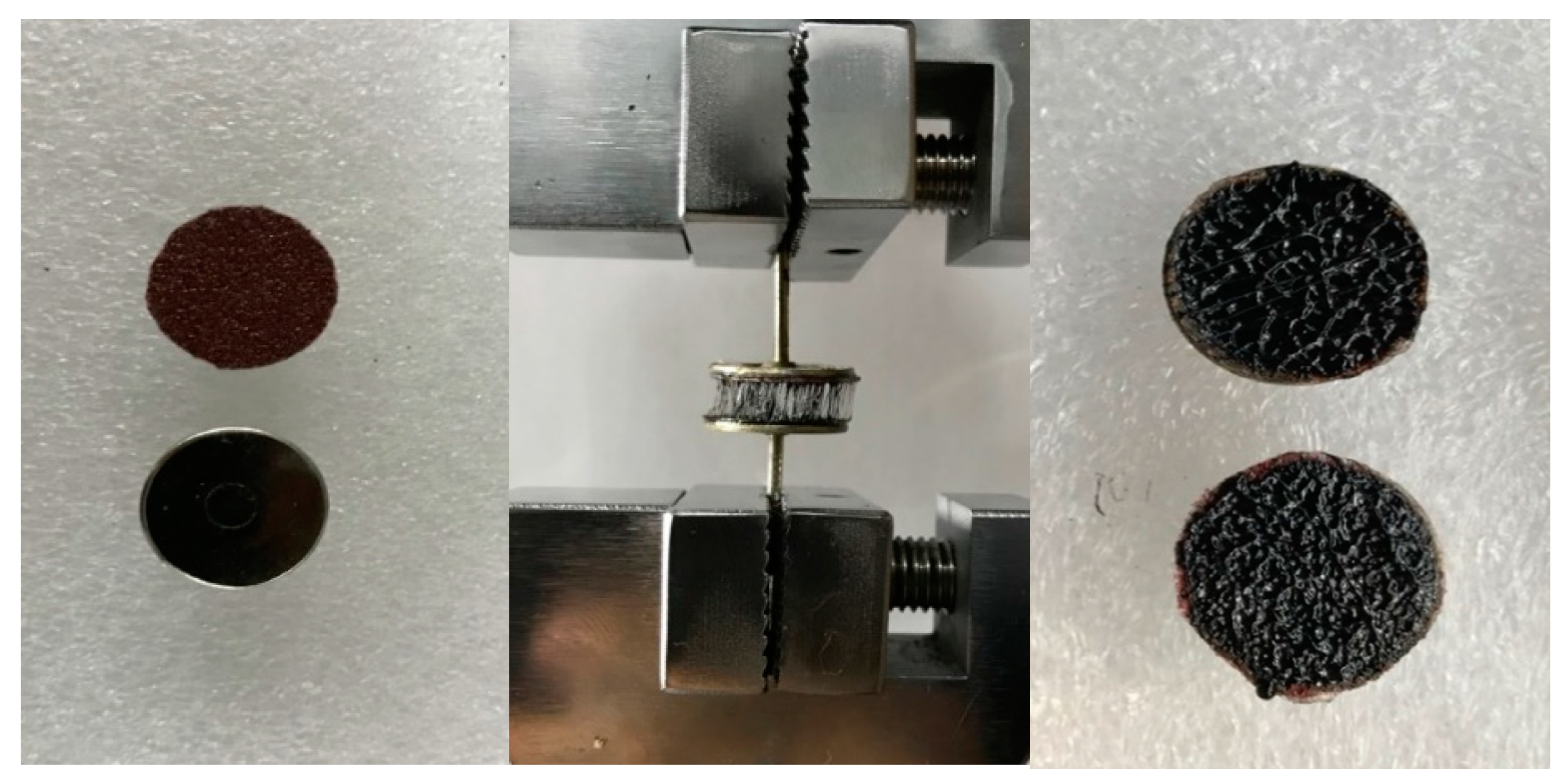


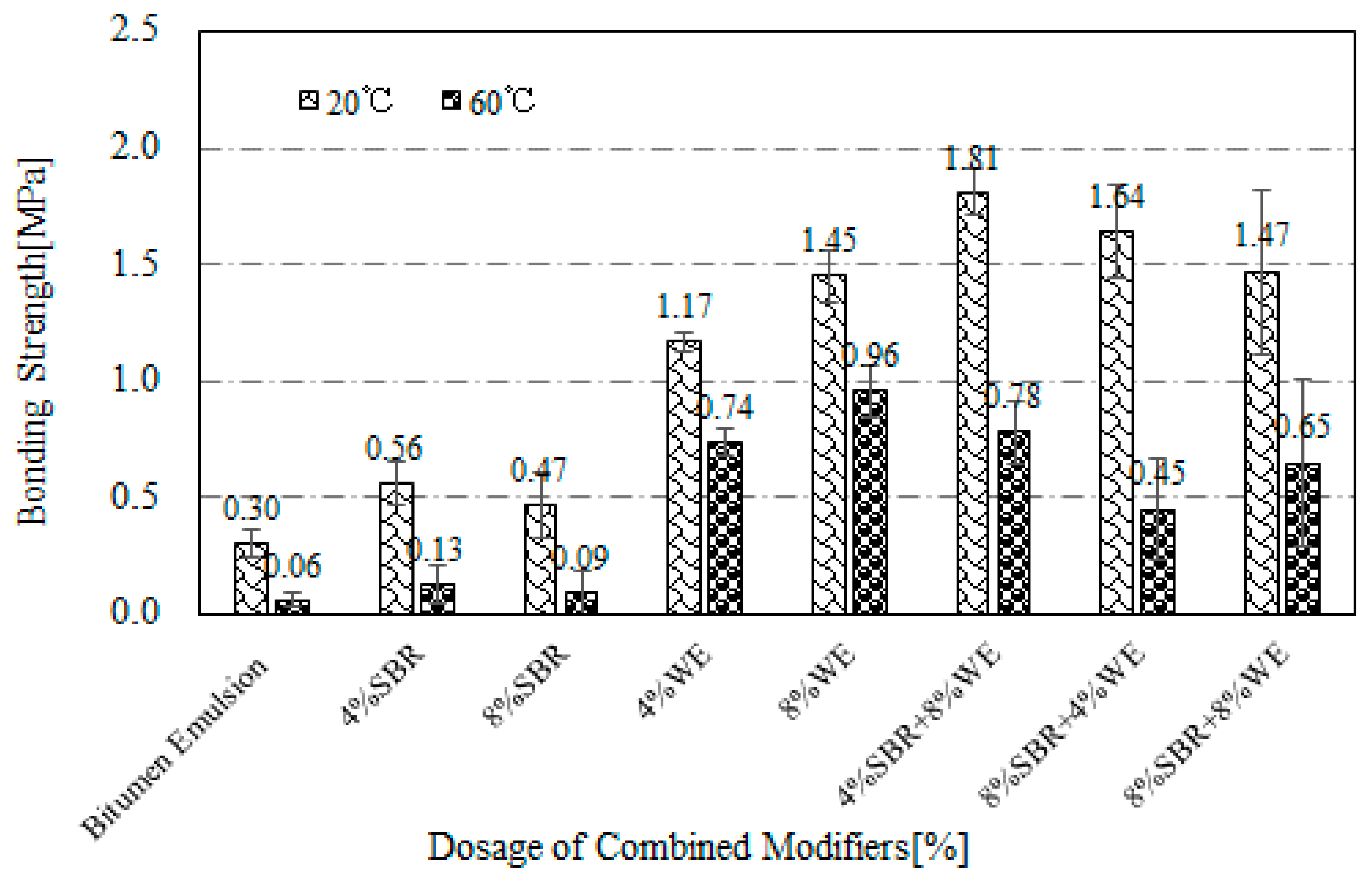
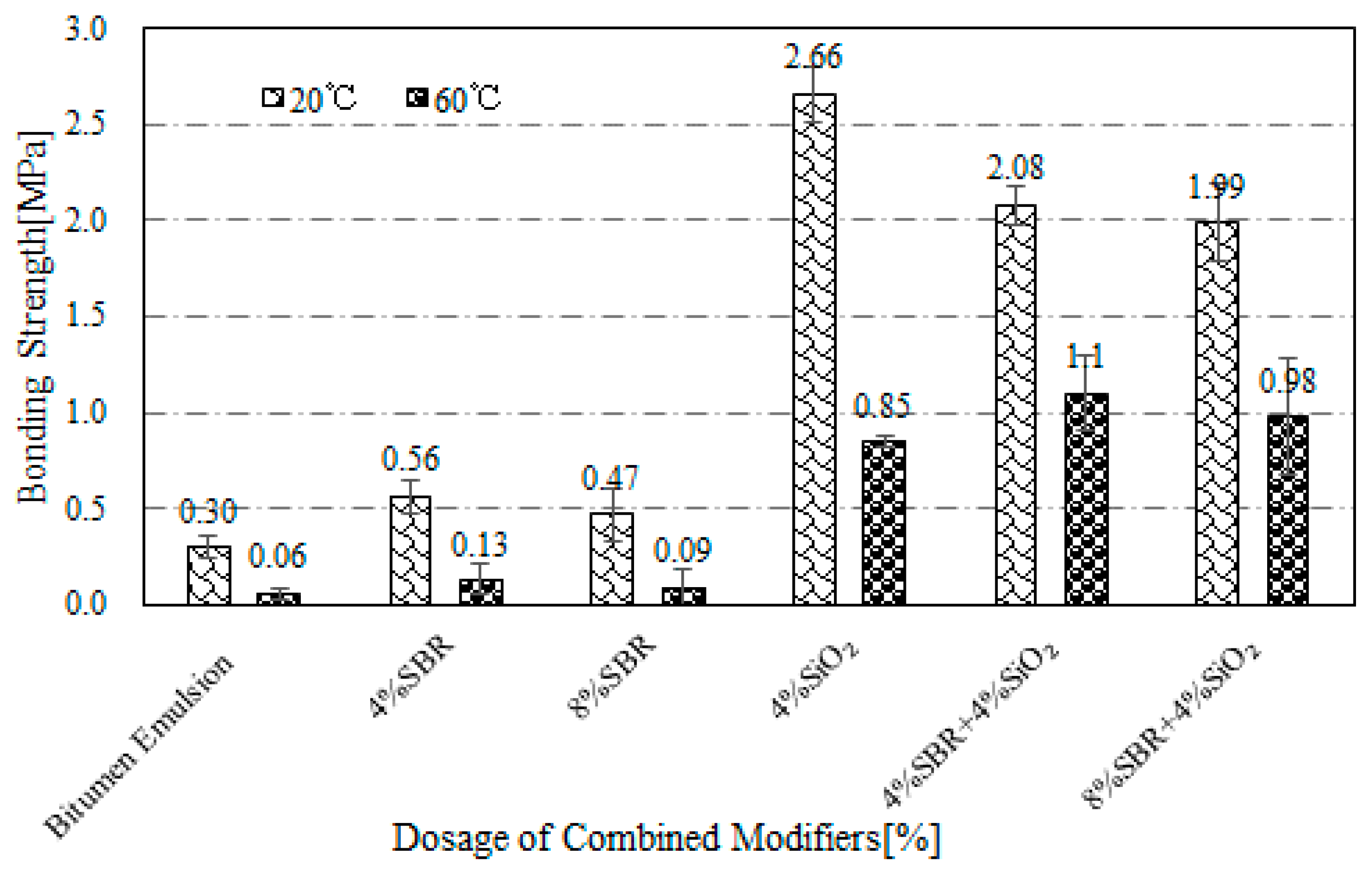
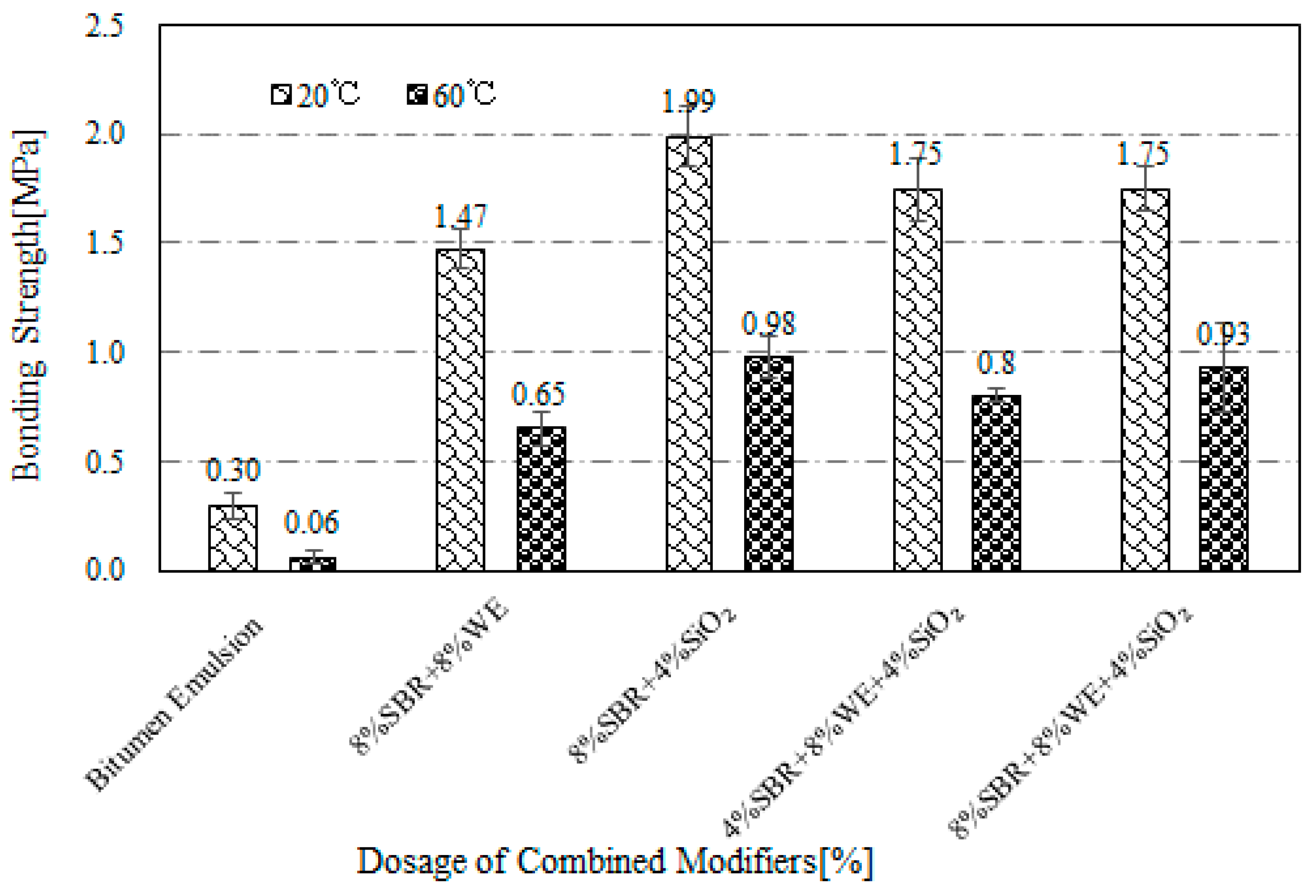

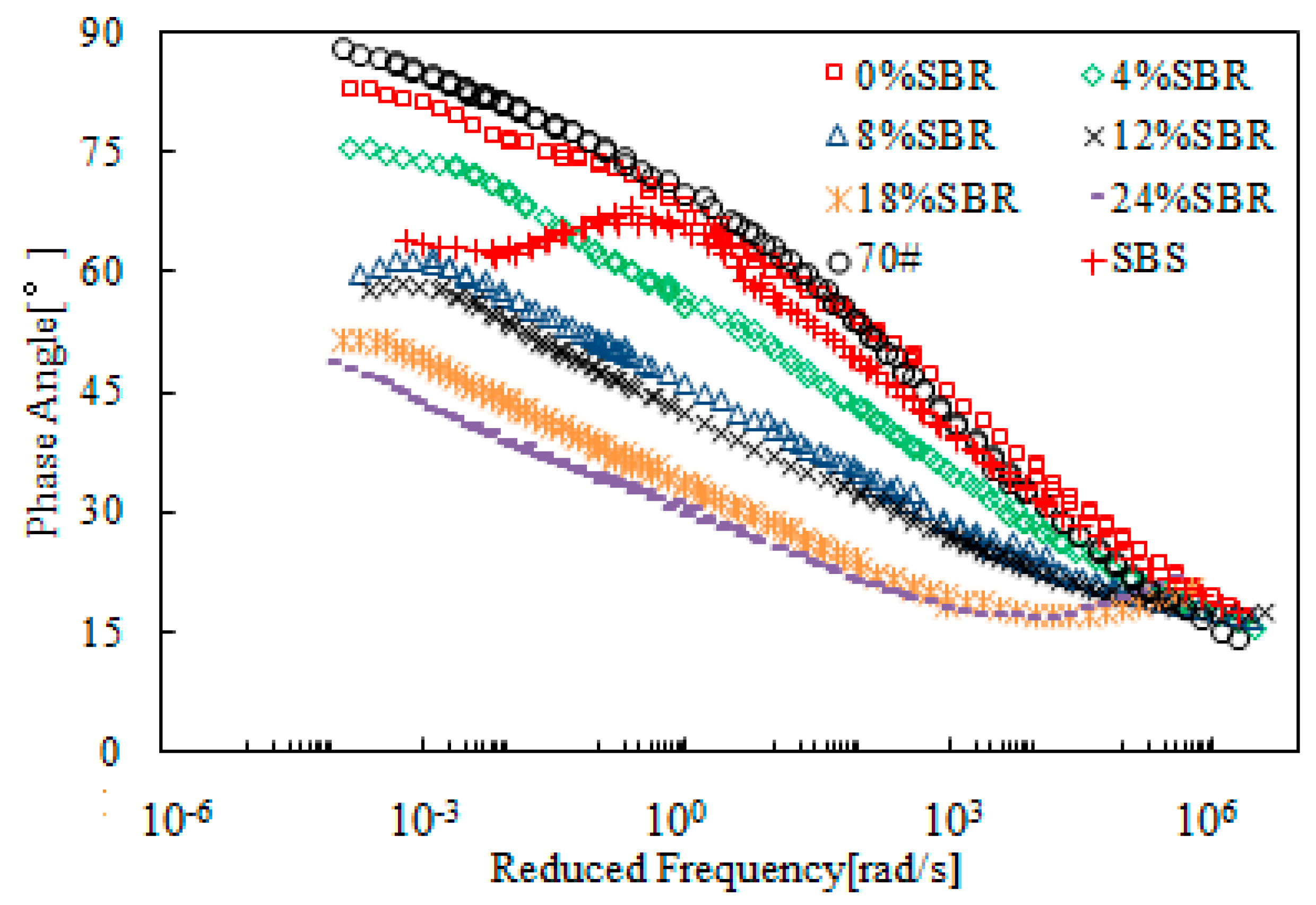

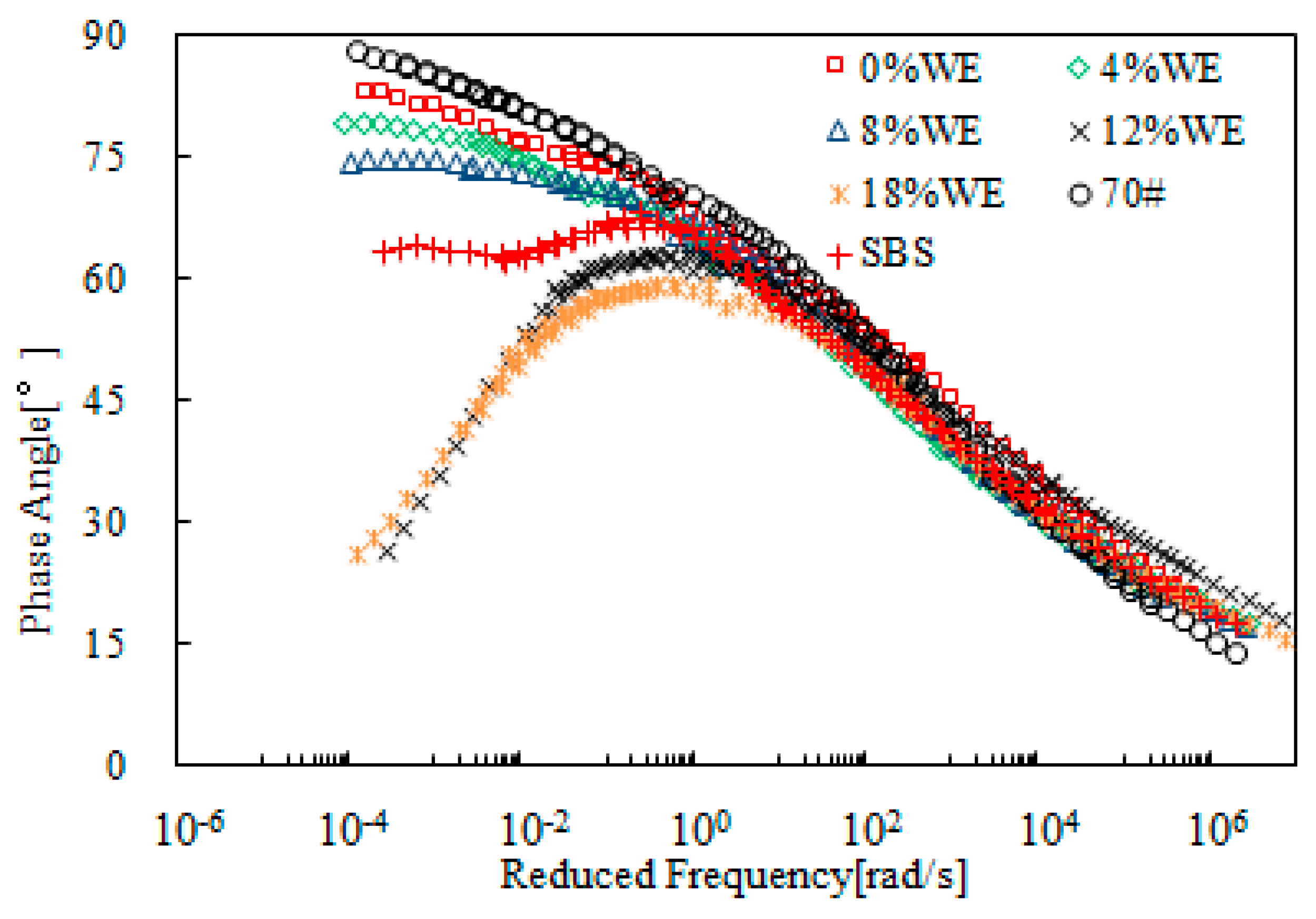
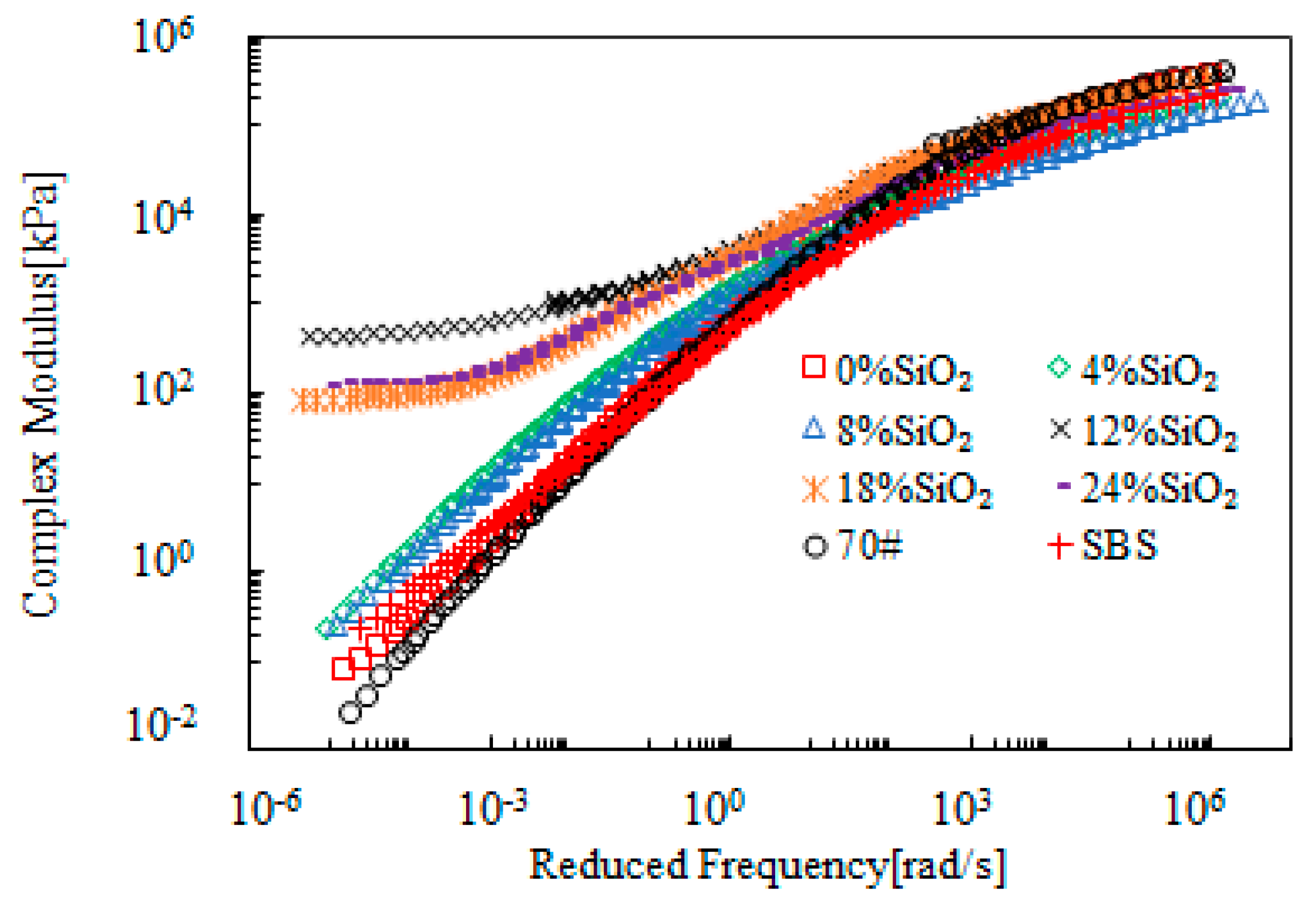
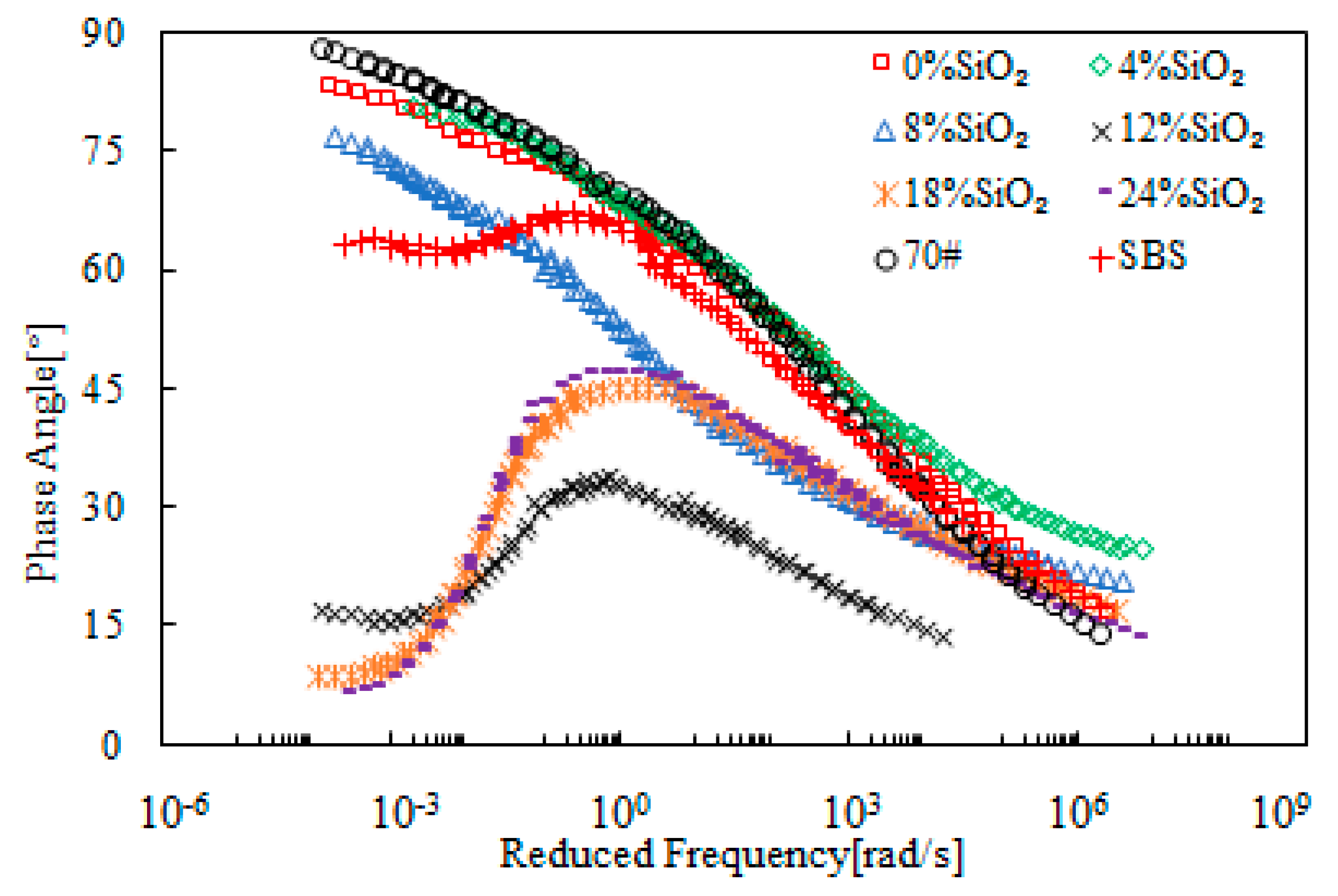
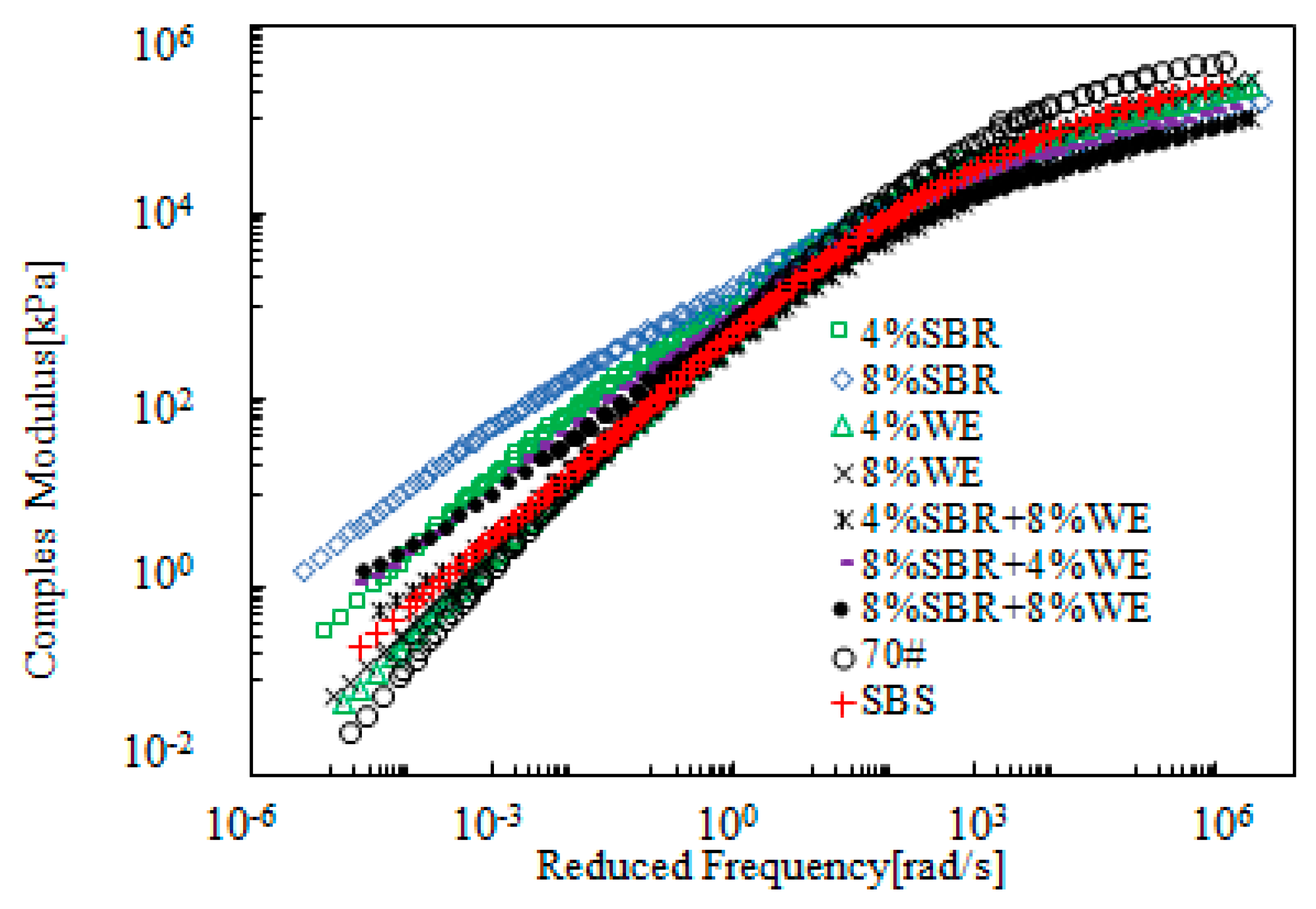
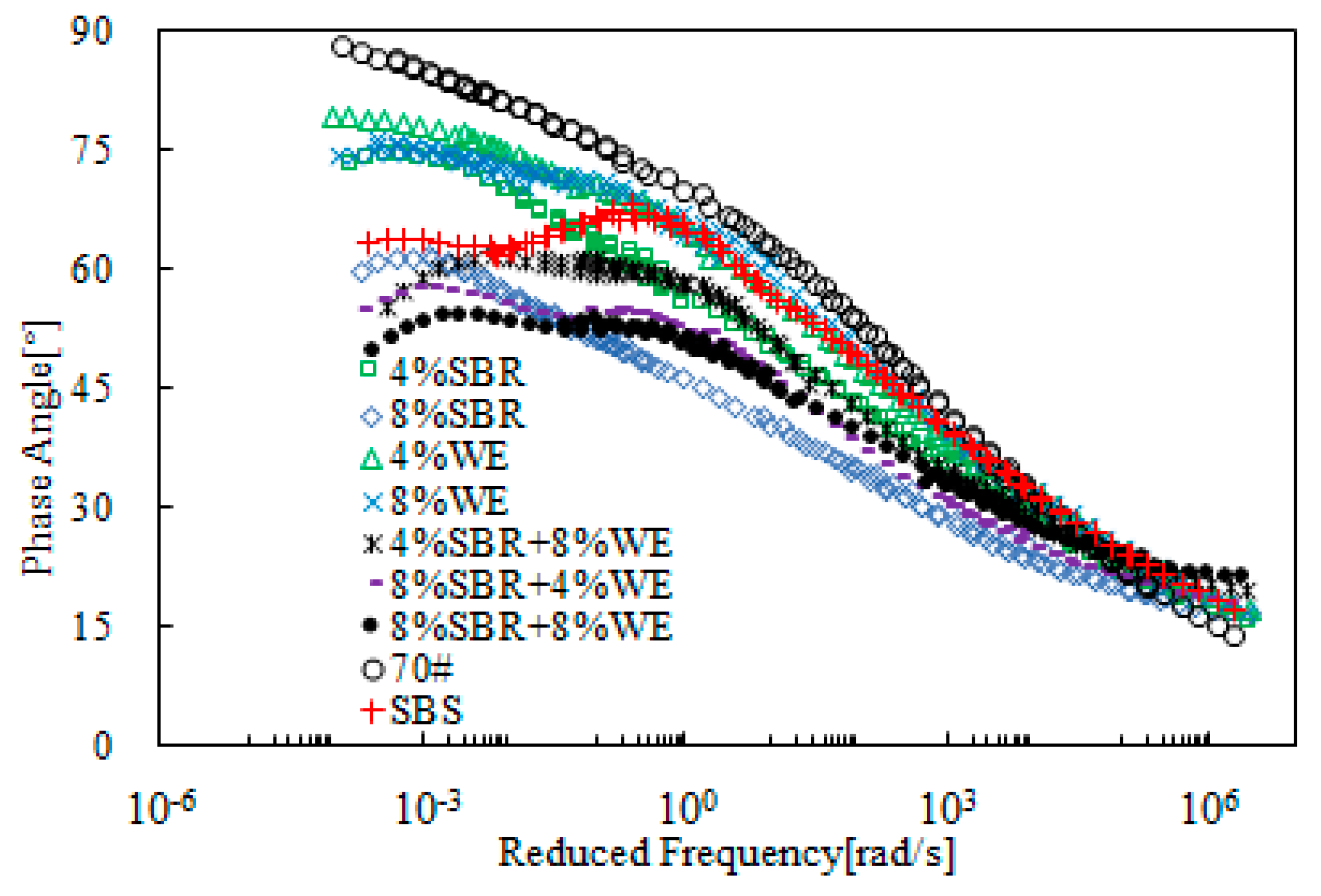
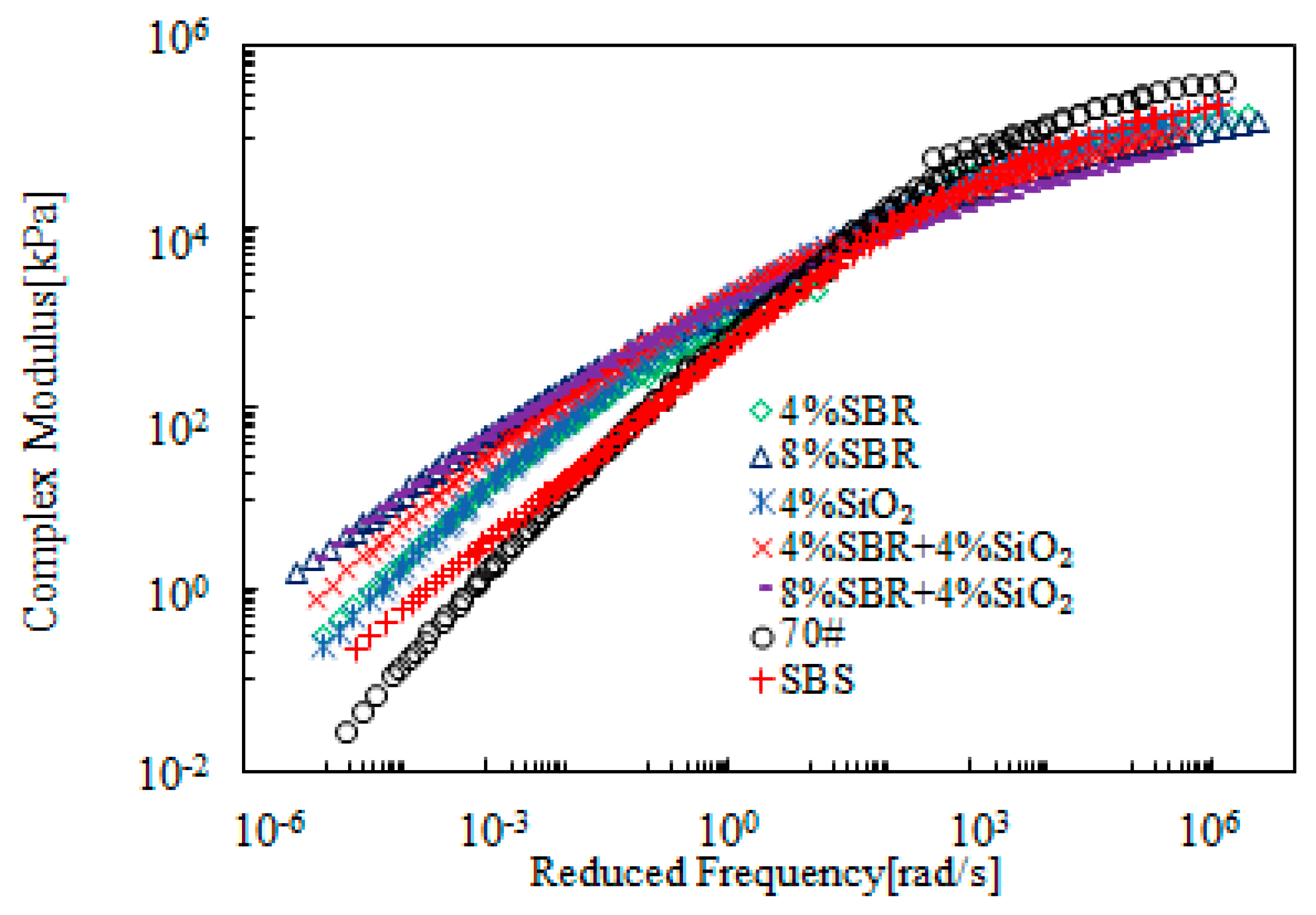
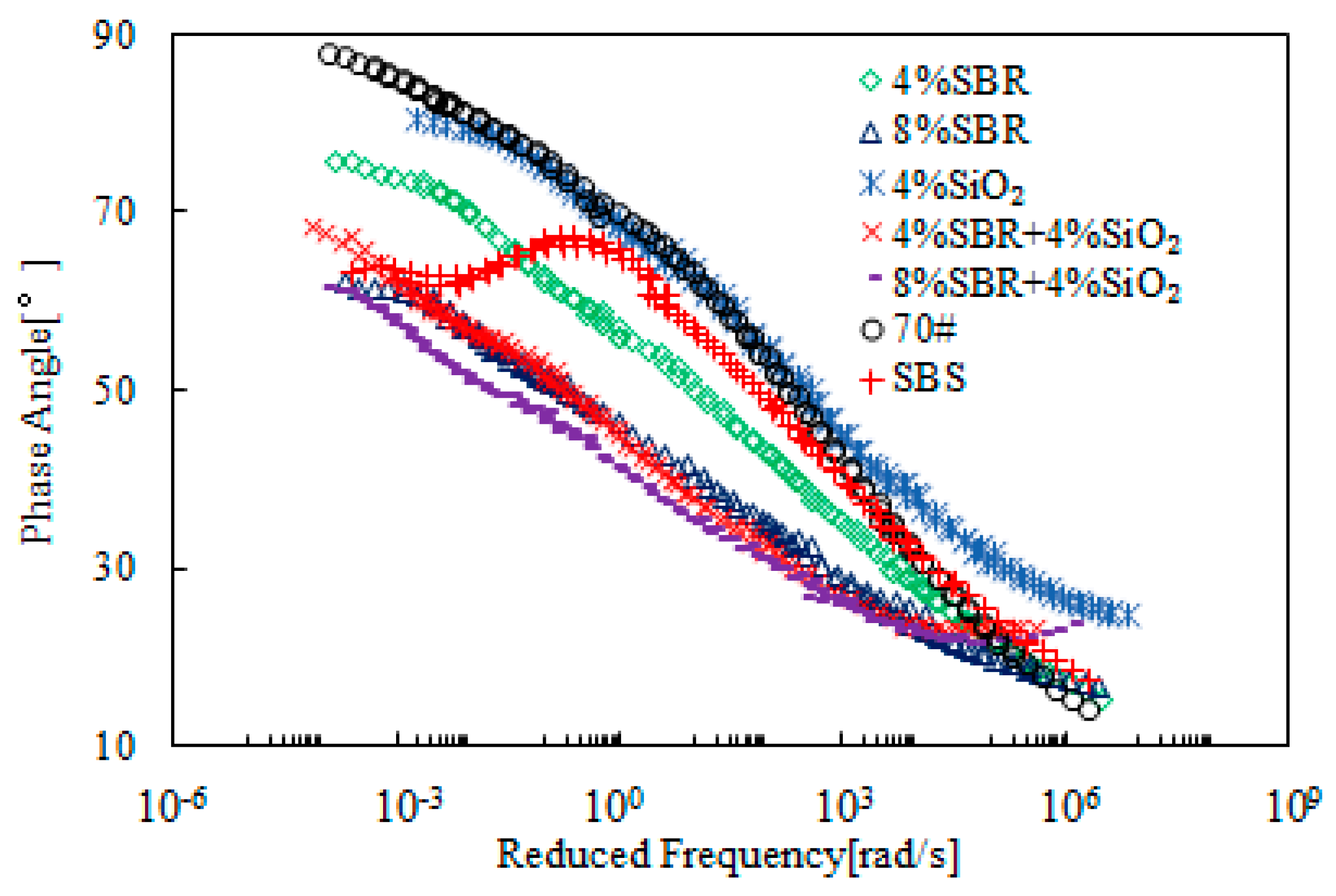

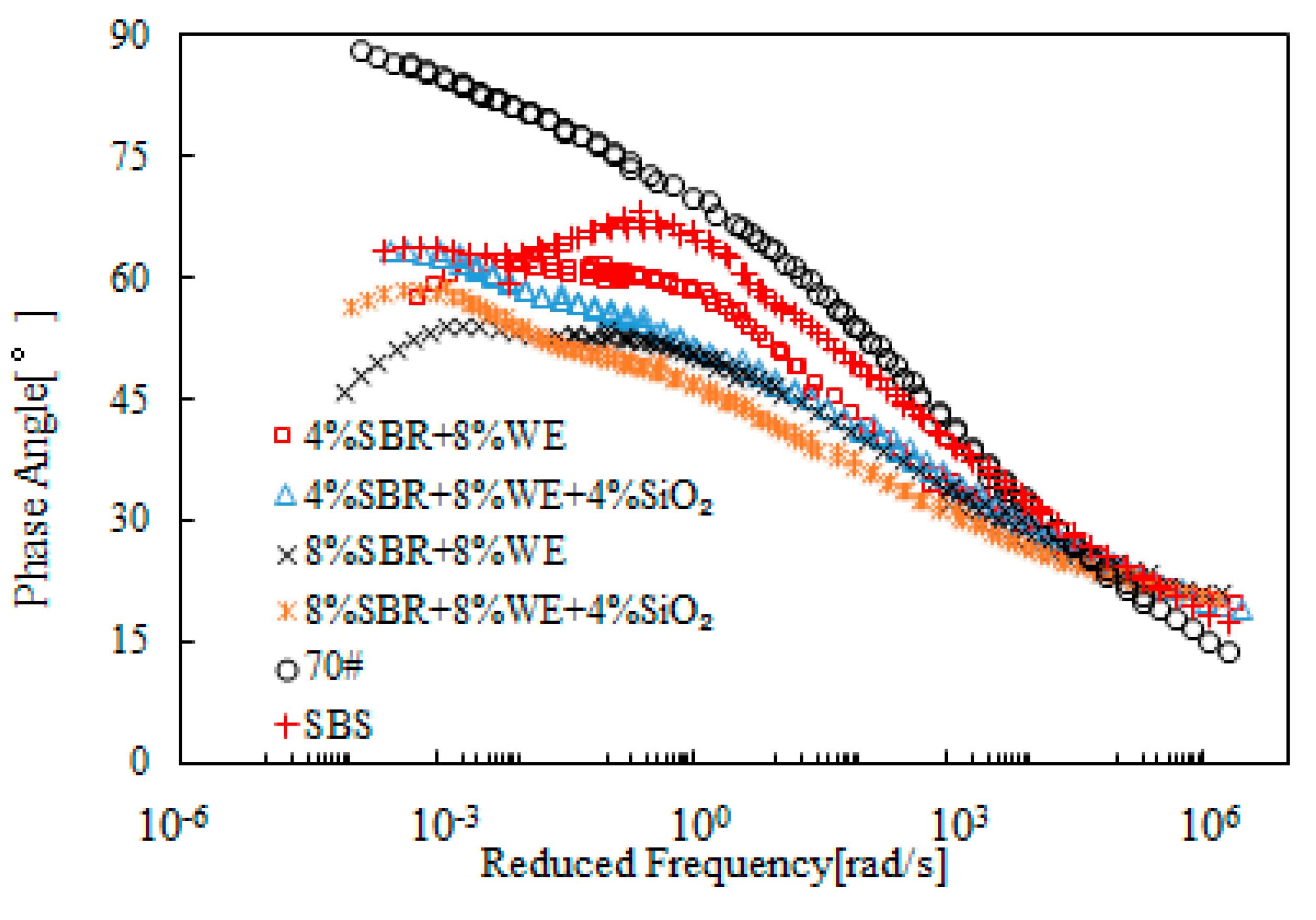
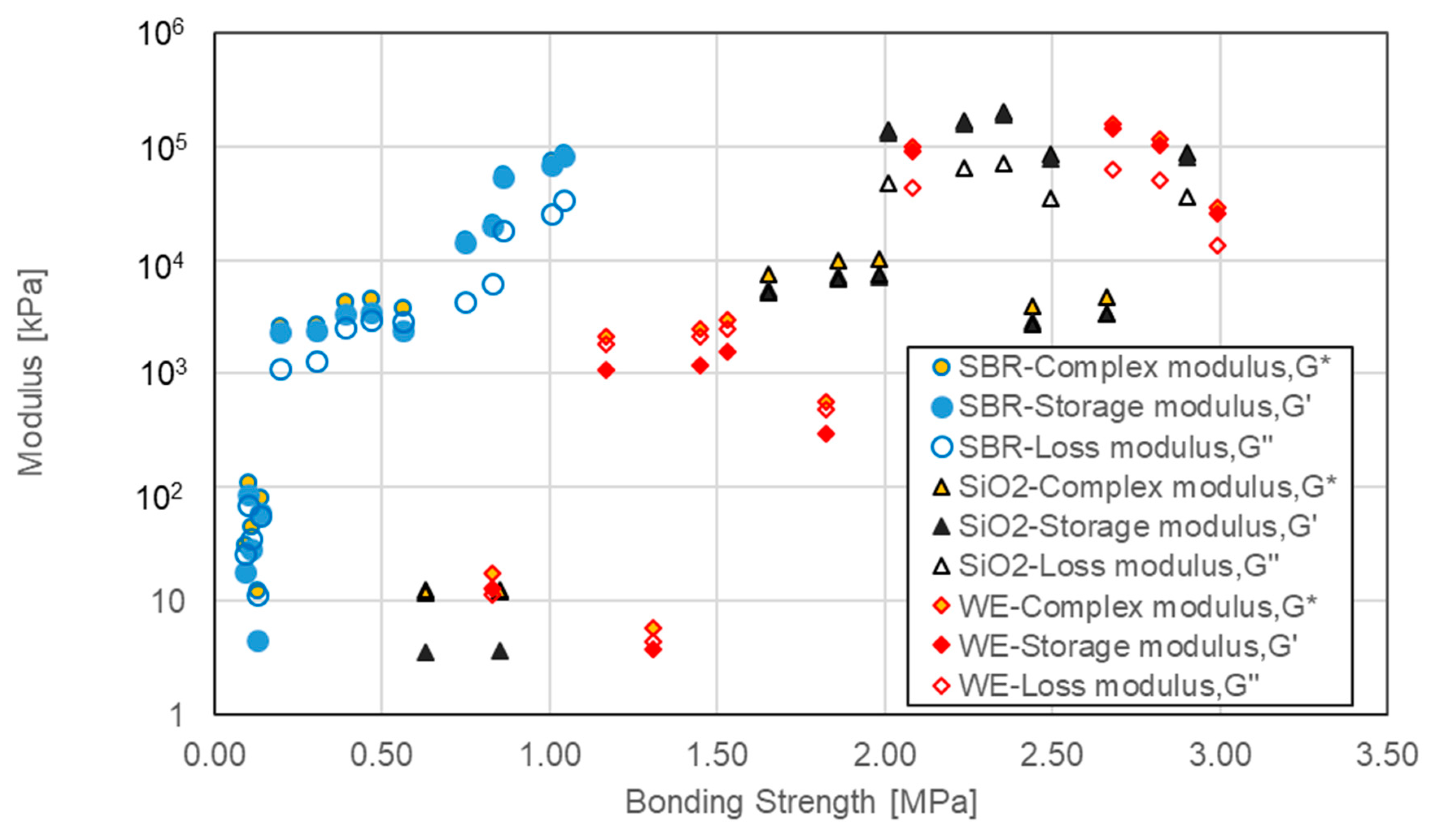
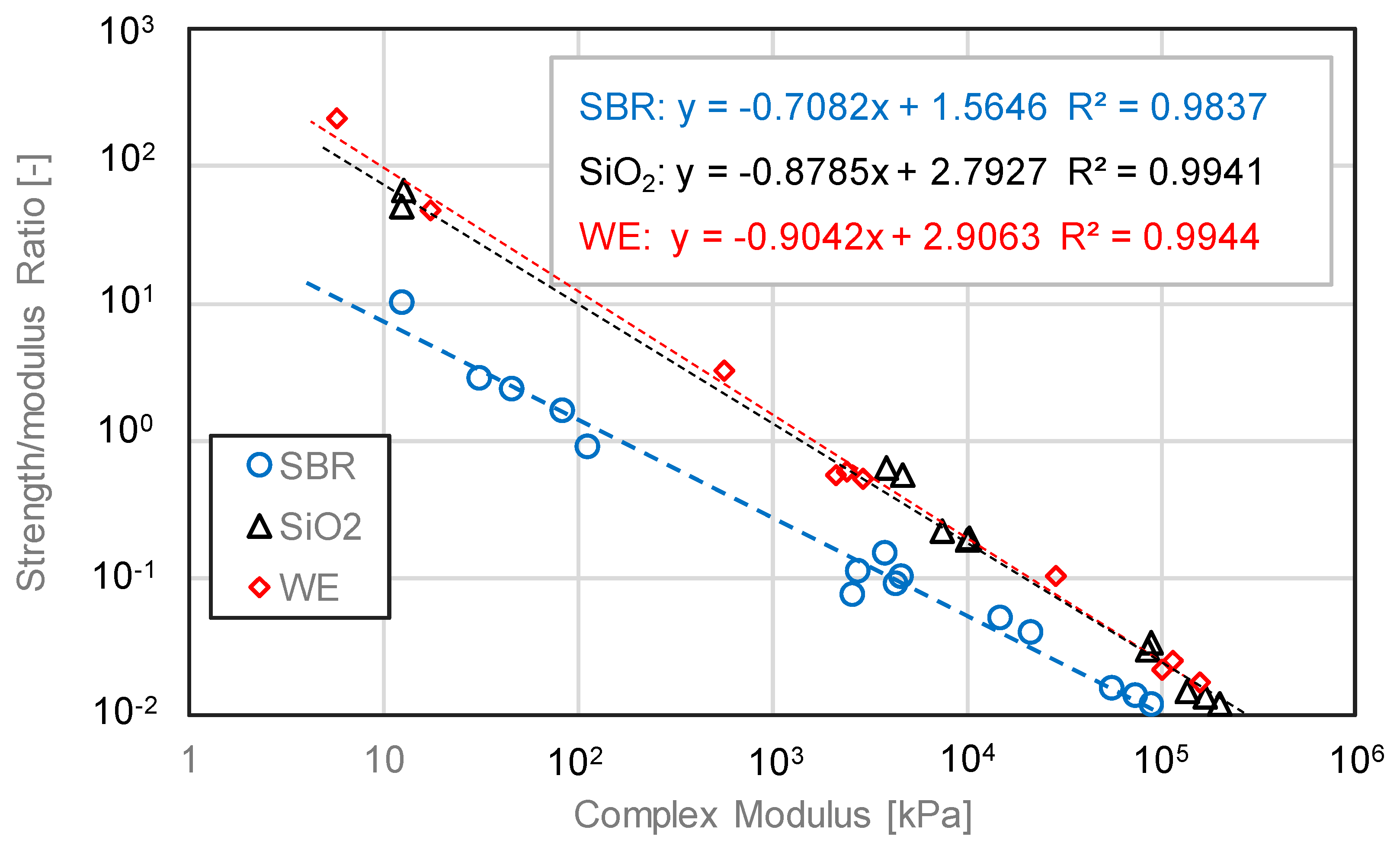
| Type of Modification | Type of Modifier | Dosage of Modifier |
|---|---|---|
| Individual Modification | SBR | 4%, 8%, 12%, 18%, 24% |
| WE | 4%, 8 %, 12%, 18%, 24% | |
| SiO2 | 4%, 8%, 12%, 18%, 24% | |
| Double Modification | SBR + WE | 4% SBR + 8% WE |
| 8% SBR + 4% WE | ||
| 8% SBR + 8% WE | ||
| SBR + SiO2 | 4% SBR + 4% SiO2 | |
| 8% SBR + 4% SiO2 | ||
| Multiple Modification | SBR + WE + SiO2 | 4% SBR + 8% WE + 4% SiO2 |
| 8% SBR +8% WE + 4% SiO2 |
© 2019 by the authors. Licensee MDPI, Basel, Switzerland. This article is an open access article distributed under the terms and conditions of the Creative Commons Attribution (CC BY) license (http://creativecommons.org/licenses/by/4.0/).
Share and Cite
Pan, C.; Liang, D.; Mo, L.; Riara, M.; Lin, J. Influence of Different Modifiers on Bonding Strength and Rheological Performance of Bitumen Emulsion. Materials 2019, 12, 2414. https://doi.org/10.3390/ma12152414
Pan C, Liang D, Mo L, Riara M, Lin J. Influence of Different Modifiers on Bonding Strength and Rheological Performance of Bitumen Emulsion. Materials. 2019; 12(15):2414. https://doi.org/10.3390/ma12152414
Chicago/Turabian StylePan, Changluan, Deqiang Liang, Liantong Mo, Martin Riara, and Juntao Lin. 2019. "Influence of Different Modifiers on Bonding Strength and Rheological Performance of Bitumen Emulsion" Materials 12, no. 15: 2414. https://doi.org/10.3390/ma12152414
APA StylePan, C., Liang, D., Mo, L., Riara, M., & Lin, J. (2019). Influence of Different Modifiers on Bonding Strength and Rheological Performance of Bitumen Emulsion. Materials, 12(15), 2414. https://doi.org/10.3390/ma12152414




